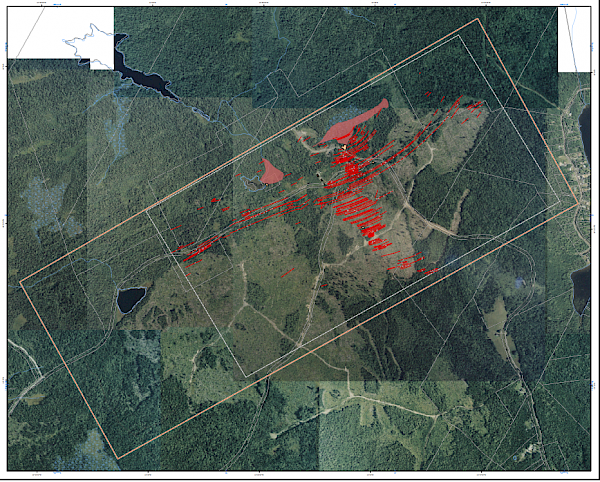Geological Description
The Exploration Licenses are situated within the Goldenville Group, which is the lower greywacke-dominated portion of the nearly 11 kilometer-thick Meguma Terrane northeast of the South Mountain Batholith.
The Mt. Uniacke claims are underlain by metagreywackes and argillites (slates) of the Goldenville Formation, which along with the younger Halifax Formation make up the Cambro-Ordovician Meguma Group. The Meguma strata is locally characterized by doubly plunging east to northeast trending anticlines and synclines. The Goldenville Formation has been subjected to greenschist facies regional metamorphism.
Intruding the above sequence, approximately 5 km southwest of the Mt. Uniacke property are phases of the granitic South Mountain Batholith.
The Mt. Uniacke claims encompass the Mount Uniacke Anticline, which trends at approximately 60° to 70°. The anticline is closely folded with the north limb dipping north at 60° and the south limb oriented vertically. The anticline plunges east at a rather low angle and west at a low angle forming a dome. On the south limb of this dome a subordinate bulge or flexure in the strata radiates from the center and extends south for approximately 900m, characterized by a large stack of parallel gold-bearing veins.
The greywacke beds on the property are medium to fine, normally graded, greenish-grey in colour, massive and well silicified. Interbedded with the above are well cleaved, fine grained dark greenish-grey to dark grey-black argillite (slate) beds. Interbedded quartz veins in the area dip steeply south (80-85°) and strike east-west to northeast.
Gold mineralization at Mt. Uniacke occurs in typical bedded or laminated quartz veins hosted by thin argillite or slate horizons within the Goldenville Formation, and to a lesser extent in crosscutting feeder veins.
Mineralization and Mining
The Mount Uniacke gold district comprises 193 abandoned shafts mined between 1867 and 1941. In 1865 the original discovery of auriferous quartz veins was made by David MacIntosh, John Sims, and Charles Sims on Richard J Uniacke’s farm.
The first production of gold was recorded in 1867 and production continued between 1867-1941, almost continuously. Peak annual production was 3,996 oz Au from 4,659 tons of crushed quartz (0.86 oz/ton).
A total production of 27,737.0 ounces of gold is recorded, the 14th largest in the province.
The last recorded exploration diamond drilling was in 1988.

